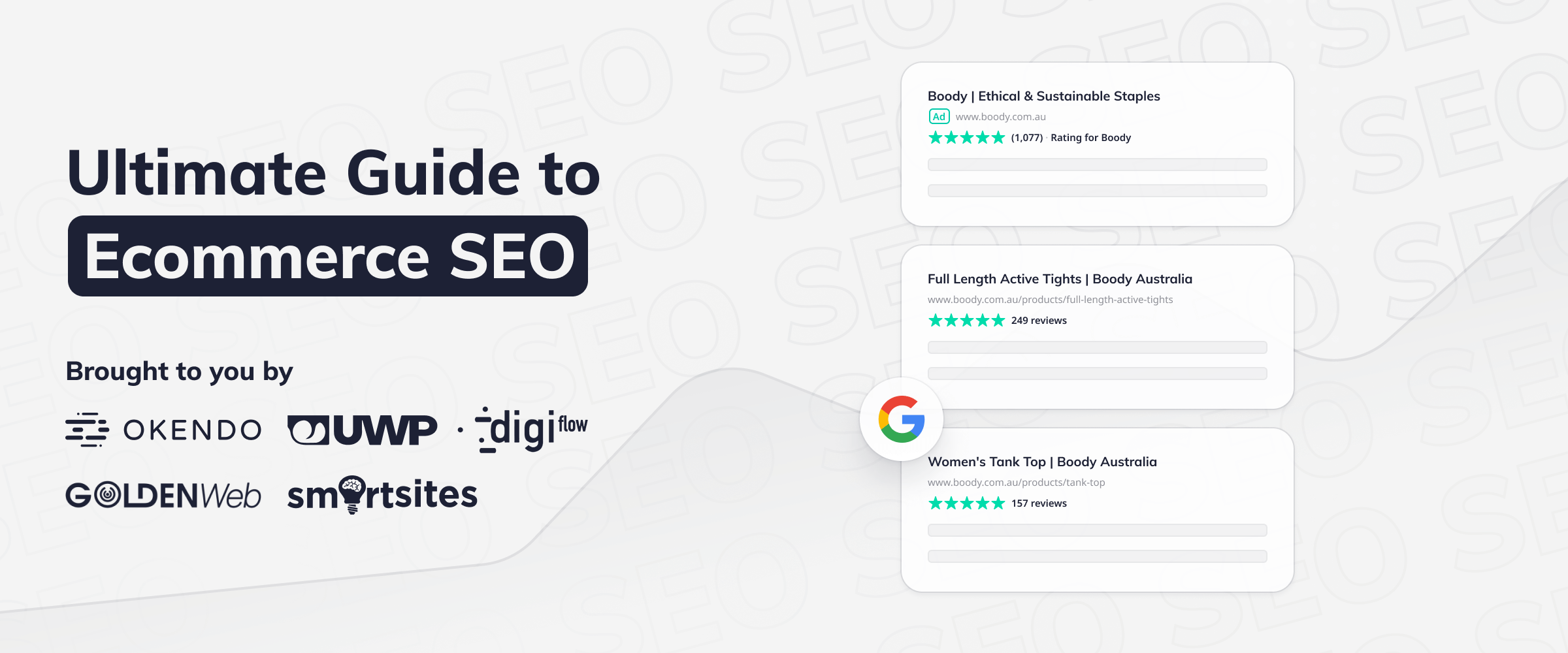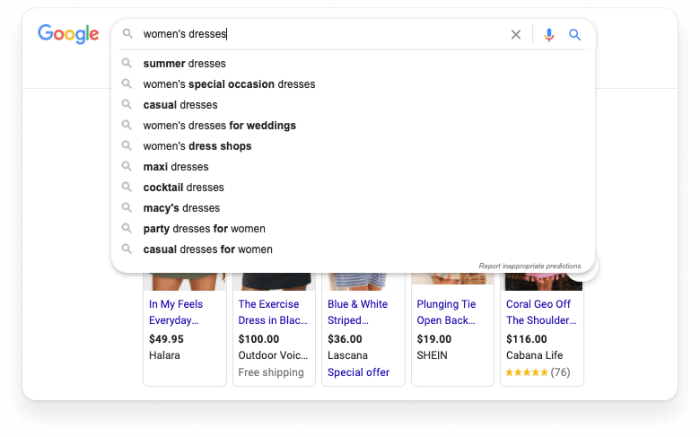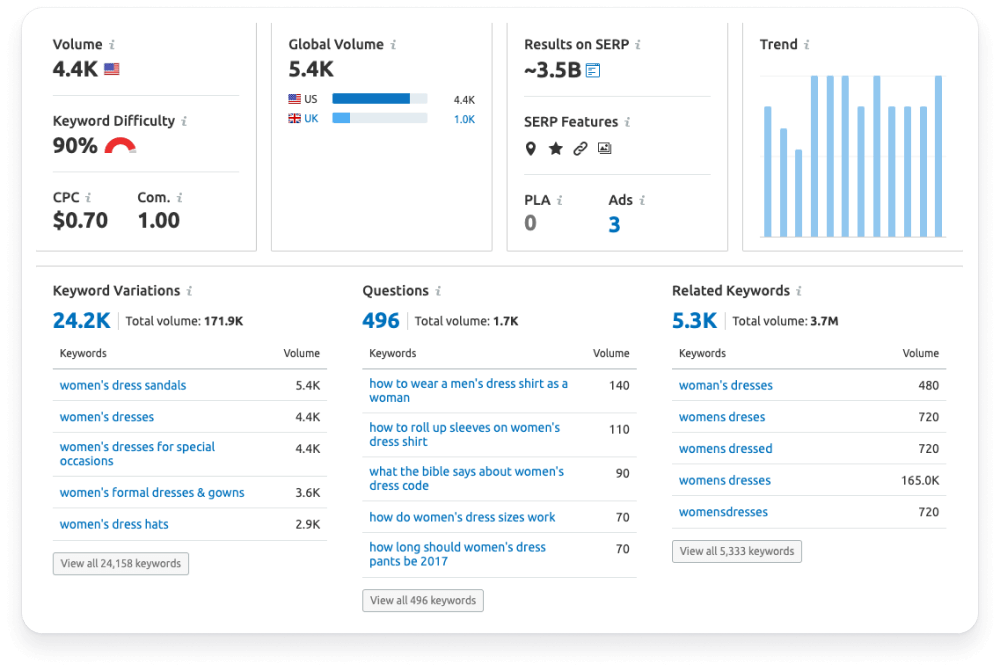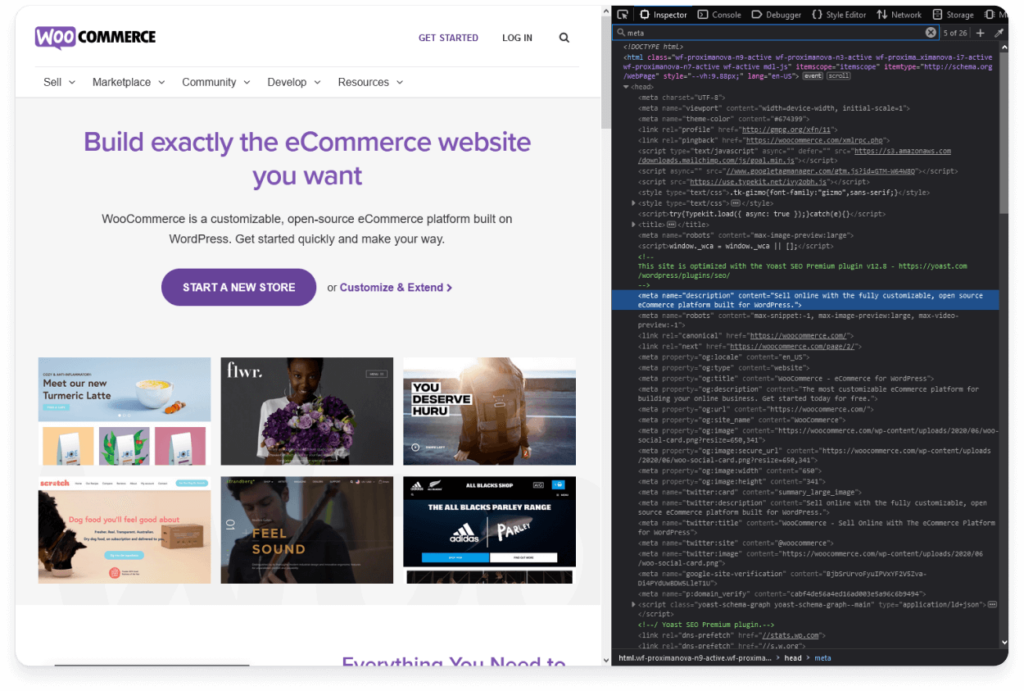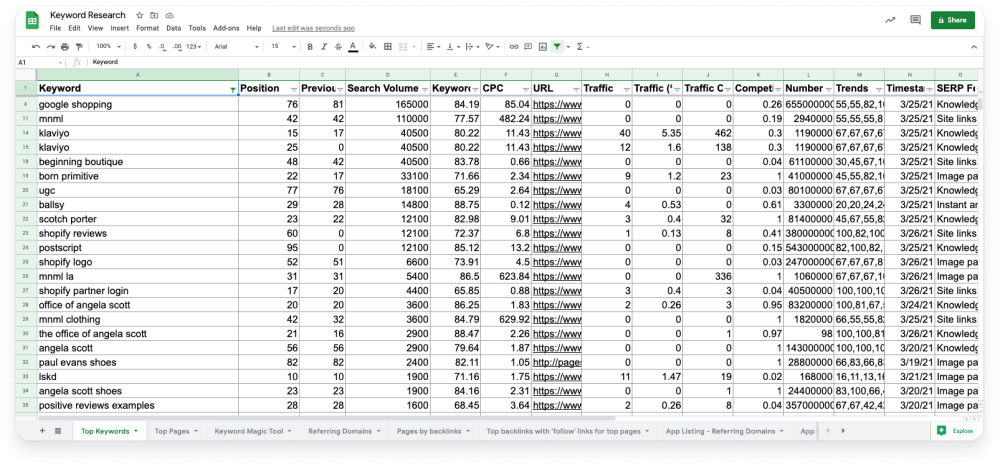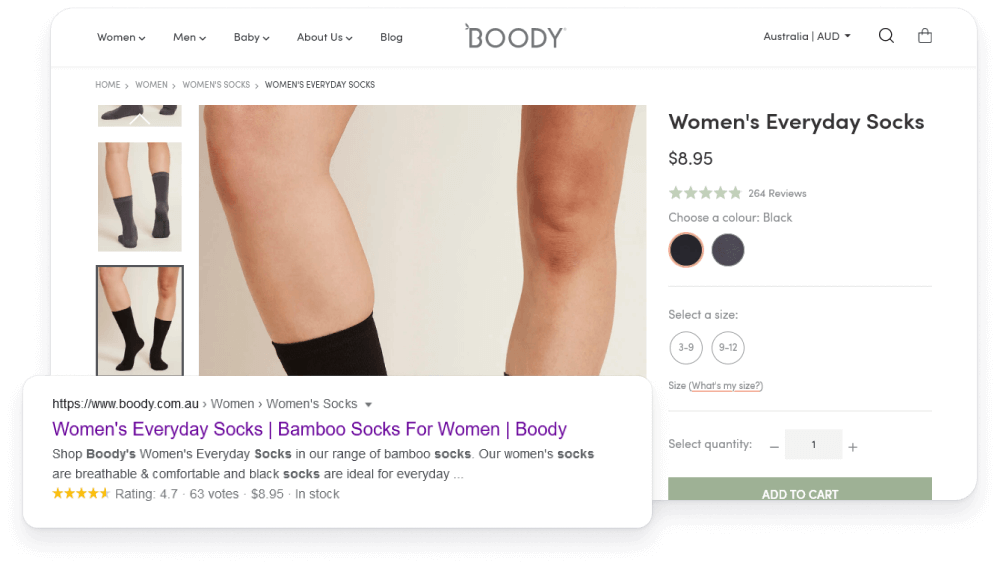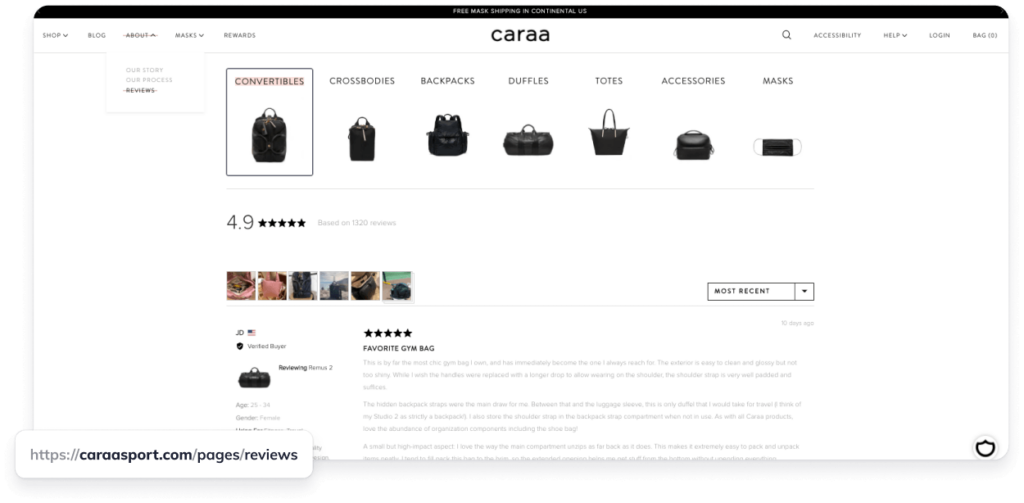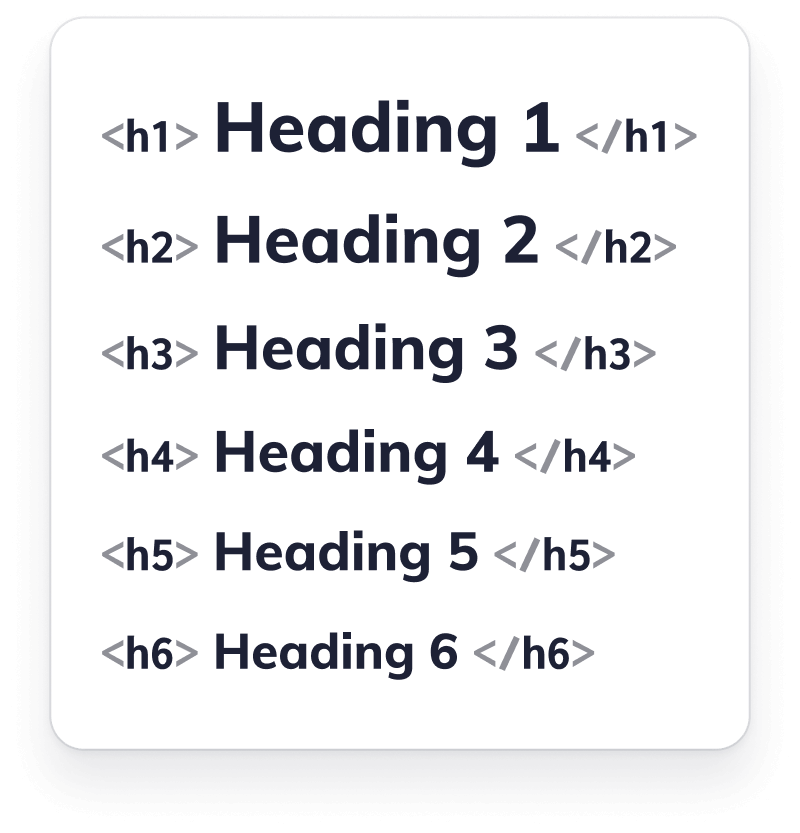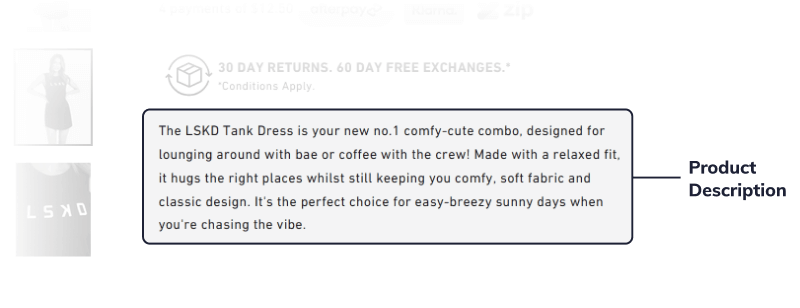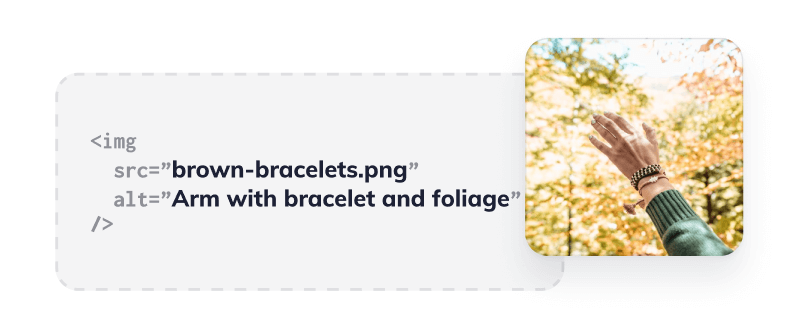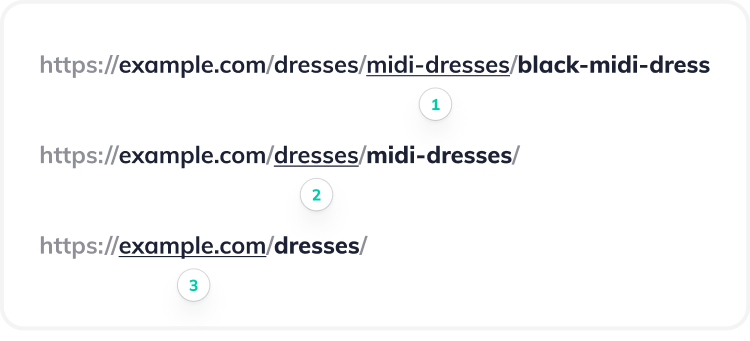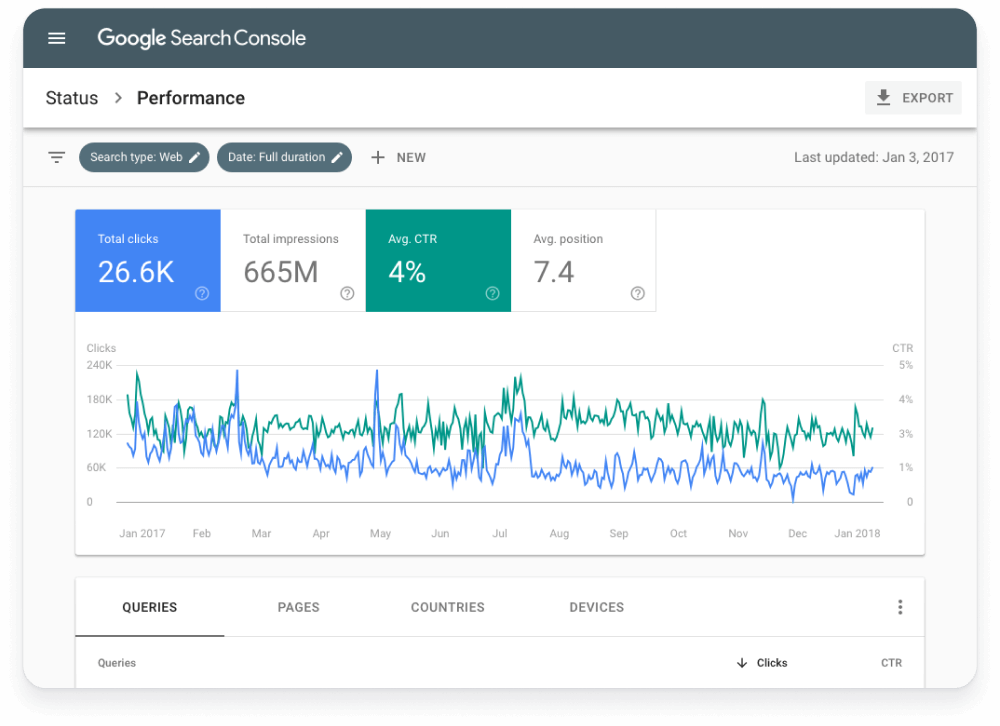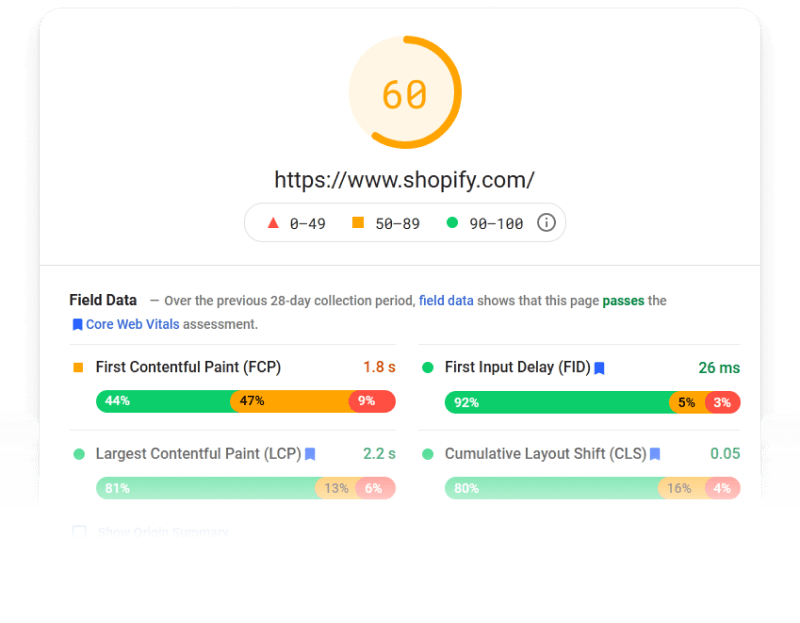In addition to providing powerfully persuasive social proof that builds buyer confidence and encourages conversion, reviews can also positively influence your SEO.
As customer reviews are generated by people who have actually purchased your products first hand, in their own words, they’ll naturally leverage relevant keywords, optimizing your store’s SEO strategy.
Typically, a review left by a customer will be rich in terms of keywords, product titles and appropriate links. Long-tail keywords also appear more frequently in content generated by your users. Even a negative review will carry these benefits — there really is no such thing as a bad review when it comes to the SEO of your ecommerce store!
One really nice aspect of the SEO gained from the inclusion of reviews on your online store is that your customers are doing all the legwork here. And because once you have a reviews program that’s automated to continually generate reviews over time, you’re able to enjoy the SEO benefits of fresh content being regularly uploaded to your store’s product pages.
Google categorically considers reviews as a ranking factor — the content generated by your customers is considered authoritative and unbiased (or at least, more trustworthy than content generated by businesses themselves!). Another important ranking factor for SEO is also click-through-rate (CTR). Reviews can greatly enhance your ability to generate attractive product listings on Google’s SERP with eye-catching star ratings and review counts. This makes your product listings more likely to see better rates of traffic flowing to your online store as they encourage shoppers to click through and read the reviews.
93% of shoppers read product ratings and reviews before making a purchase, and shoppers are even willing to spend 31% more with a brand that has excellent reviews. So without them, you could be missing out on a large amount of sales.
How to Use Reviews for SEO
When it comes to using reviews to boost your SEO rankings, there are of course some best practices that it pays to follow.
1. Create a Dedicated Reviews Page
When conducting product research, ultimately consumers trust their peers more than they trust your marketing department! As a result, people trying to decide on a product to purchase will actively search for reviews. Harness this behavior for your own SEO benefit by creating a dedicated reviews page.
Not only does this increase the chance of your brand ranking above competition for specific, high purchase intent searches. It also simplifies navigation for those who actively search for reviews during their initial search on Google through to their browsing process onsite.
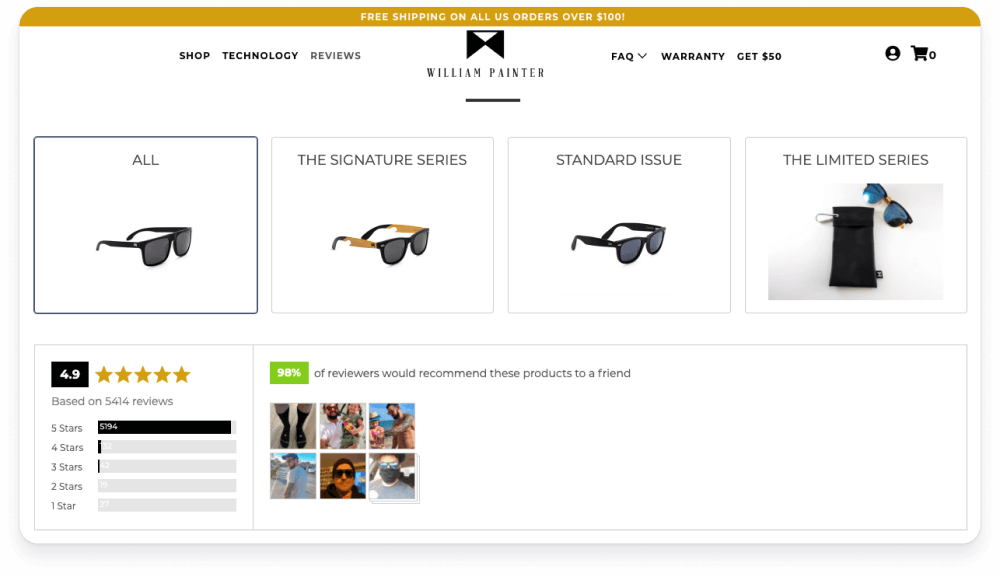
2. Include Rich Snippets
When it comes to enhancing the impression that a listing makes within the search engine results pages, you can expect a higher click-through rate for products that include an element of review information within the presentation.
Given the choice of a listing with and without a rich snippet which provides shoppers with product review information such as star ratings and review counts, people will always gravitate towards the one with them. It also enables you to start to build trust with shoppers before they’ve even landed on your store, and improves the chances of them choosing you over a competitor.
Better click-through rates, as we know, lead to better rankings, so the benefits here are ongoing and self-perpetuating.
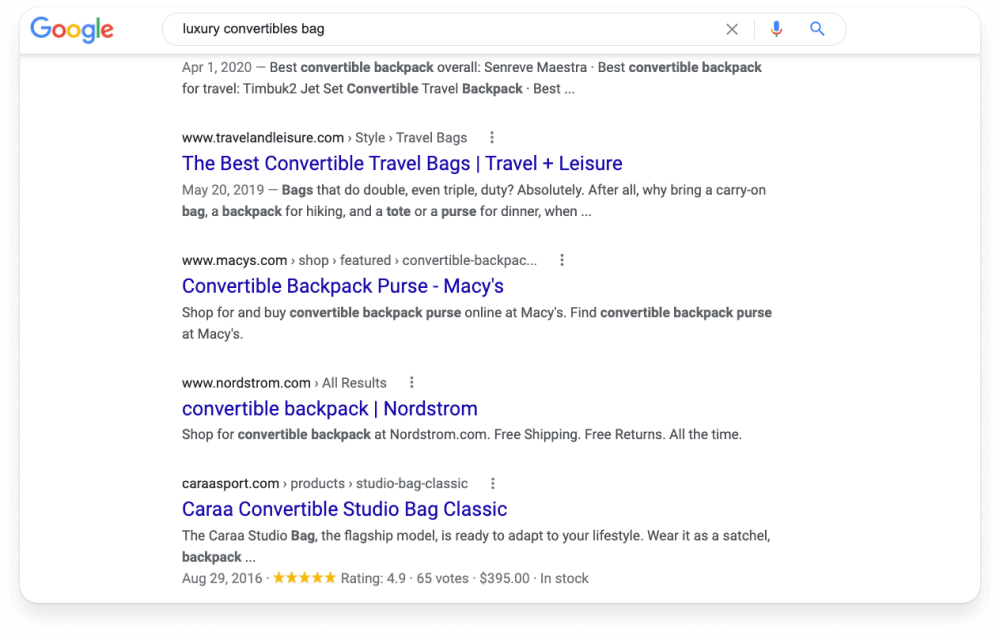
3. Respond to Reviews
There are many benefits to responding to customer reviews — including for your SEO. Search engines love to see pages regularly updated with fresh, relevant content. By making sure you consistently reply to the reviews left by your customers, you double up the benefit here.
Replying to reviews also gives you greater control over the leverage of additional keywords, in particular long-tail keywords, which can otherwise be difficult to include at any kind of scale or frequency across your product pages.
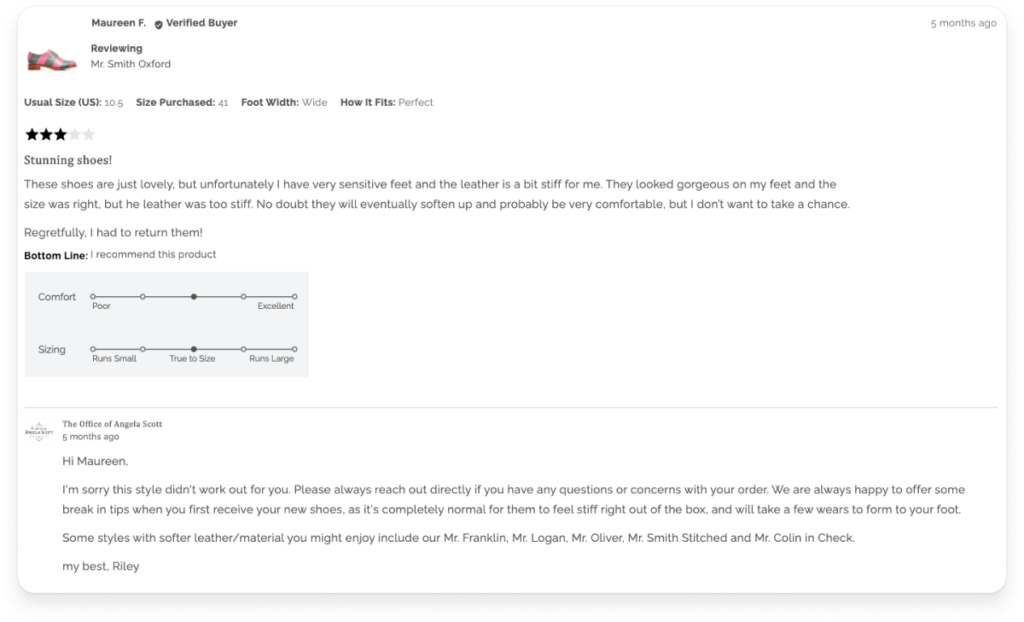
How to Collect Reviews for SEO
With reviews bringing so many SEO benefits, you’ll need a strong customer review strategy in place to maximize your number of reviews.
Okendo helps automate the process of collecting reviews through post-purchase email sequences that allow you to send well-crafted and perfectly timed review requests emails to customers. Merchants that are looking to ramp up the quantity as well as quality of their reviews are able to offer rewards to customers in exchange for their review.
As well as enabling you to collect more reviews, Okendo helps you make better use of them in your SEO and SEM strategy by driving fresh, keyword-rich and highly relevant content organically to your store’s pages and Google listings alike to boost rankings.
Okendo allows you to include rich review meta-data on your Google Organic Product Search Results. Okendo offers this integration on all plans, and as a result, their merchants are able to benefit from an increase in visibility, click-through-rates, and ultimately, conversions.
But the opportunities don’t end there. With Okendo, you can also integrate reviews with Google Paid Search Ads as Seller Ratings offered on every Okendo plan for an additional charge or with Google Shopping and Product Listing Ads starting on the Growth Plan.
A great customer example is The Office Of Angela Scott. By leveraging the power of reviews to enhance their listings on Google, the brand saw an 81% increase in conversion rate.
For a deep dive into how Okendo can help enhance your performance on Google Shopping, read our guide on Google Shopping.
Reviews and ratings truly are a crucial element of the buyer journey. Make an impression on shoppers at every point of the Google SERP using reviews to deliver the most impactful and effective product listings that drive sales.
